SpaceX Starship evolution: Will Musk’s rocket become the first interstellar transport of humanity?
13th Nov 2023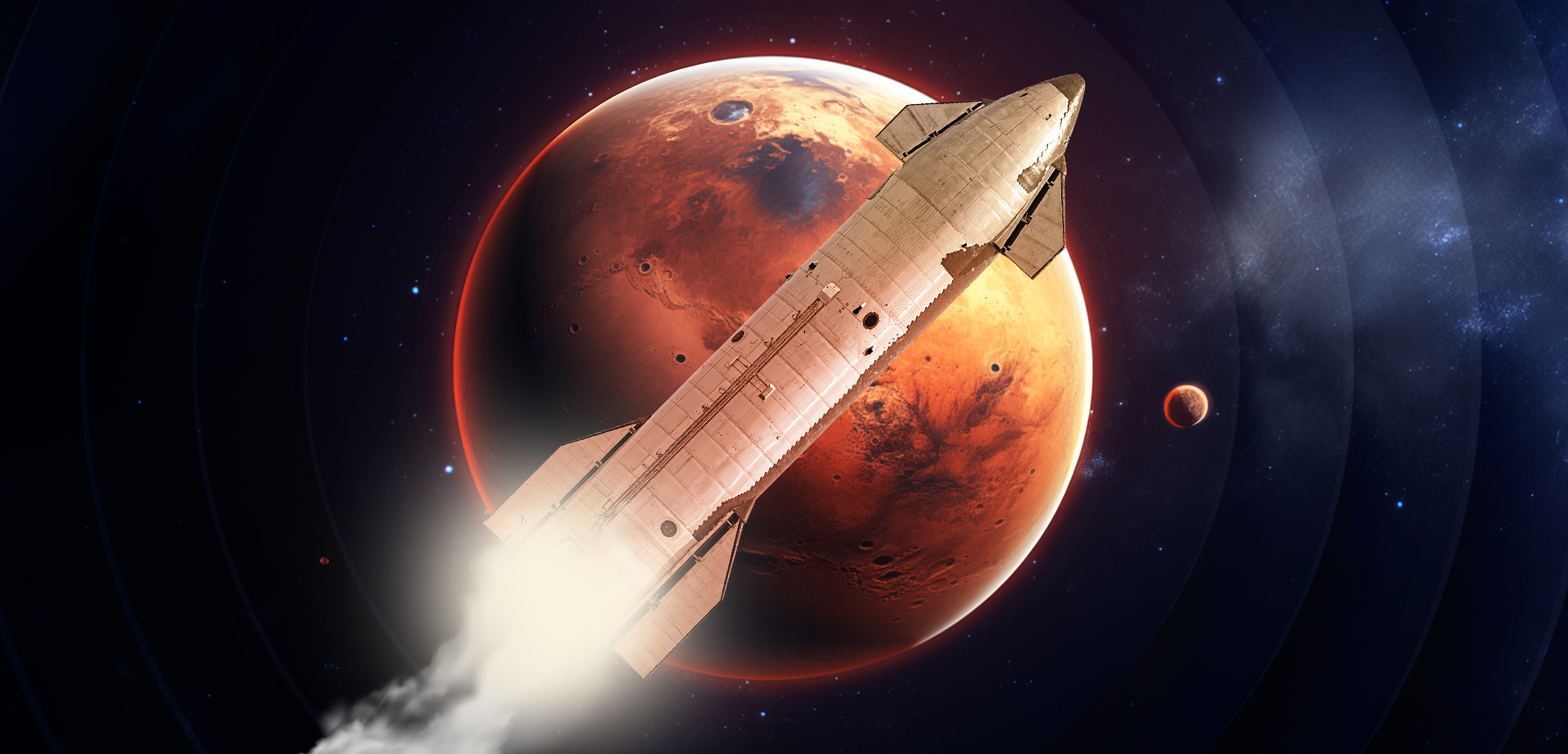
In recent years, the SpaceX Starship has attracted the attention of everyone interested in space exploration. And for a good reason! The unique SpaceX space transport system has every chance of becoming the main interplanetary spacecraft on Earth. Its creator, Elon Musk, promises us flights to Mars and back, and NASA entrusts this spaceship with the task of delivering astronauts and cargo to the Moon as part of its program named Artemis.
Let’s find out how Elon Musk’s rocket was created and how it evolved, what hardships it went through, and try to find out when we will finally see the epochal moment of Space X Starship launch to the Moon and Mars.
What is the purpose of this huge rocket?
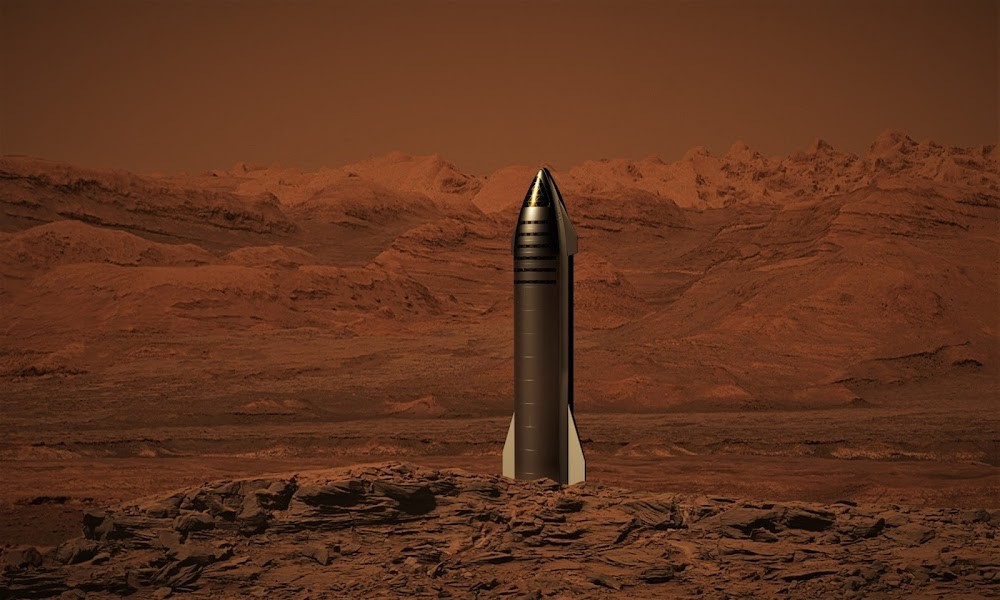
Starship is the most powerful and largest launch vehicle in size and weight in the history of space exploration. Before Starship, the Saturn V, which was specially built for the Apollo lunar mission, held these records.
Elon Musk decided not to reinvent the wheel. Starship’s design is not unique and largely repeats its legendary predecessor. The system consists of two stages. The first one is a booster, and this role is performed by the Super Heavy launch vehicle; the second stage is for transporting astronauts and cargo. In the Starship vs Saturn V comparison, though, the younger rocket wins significantly.
Starship is to launch to:
- low Earth orbit;
- sun-synchronous orbit;
- geostationary transfer orbit;
- Moon and Mars.
It is expected that SpaceX’s spacecraft will be reusable and will be used for:
- satellite launches;
- space stations supplying;
- tourist missions, including to the Moon;
- commercial missions to the Moon;
- commercial long-distance flights on Earth along a ballistic trajectory;
- exploration and colonization of Mars.
Until now, humanity has not yet had a universal rocket. The Saturn V was powerful but disposable, and the Space Shuttle, unique to this day, could deliver cargo and astronauts to orbit and back, but it could not fly to the Moon. This SpaceX rocket will be completely reusable, making it much easier to launch again from the Moon or Mars without having to build a new ship or launch vehicle. This will save time and money, simplifying the flight procedure and pre-flight preparation.
How much does one Starship cost?
Elon Musk claims that SpaceX Starship’s cost will be lower than all existing launch vehicles (from 2 to 20 million USD depending on the mission type). For comparison, the launch of one Saturn V and Space Shuttle cost US taxpayers an average of 1.5 billion dollars (in today’s prices), and the launch of a Falcon 9 today costs 60 million.
So, it is expected that this rocket will eventually replace the expendable and partially reusable launch vehicles of SpaceX — Falcon 9, and Falcon Heavy, as well as Crew and Cargo Dragon ships.
Starship evolution
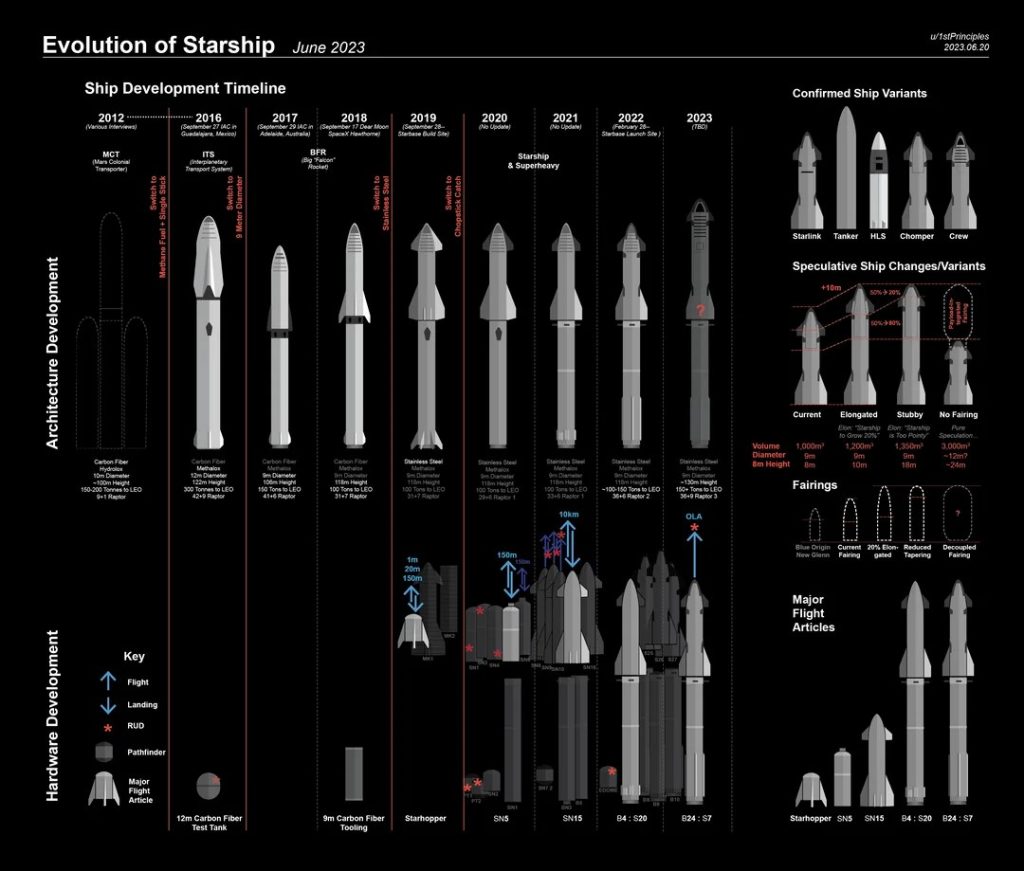
Elon Musk first voiced the idea of interplanetary flights in 2002, immediately after the creation of SpaceX, and in 2010, he presented the first super-heavy launch vehicles and announced the development of new rocket engines. In 2012, SpaceX announced it was starting work on a new spacecraft for missions to Mars, and two years later, conducted the first tests of structural elements of the ship’s engine with higher potential than the Falcon rocket family.
At the 67th International Astronautics Congress in Guadalajara in 2016, Elon Musk spoke in detail about the Interplanetary Transport System (ITS) project, which would be able to fly to the Moon and Mars. The company’s CEO showed what the ITS would look like and stated that the first mission will depart in 2024.
Changes made to Starship prototype modifications (2016 — nowadays)
| Modification | Date of presentation/trial | Event | Specs upgrade |
| ITS | 27 September 2016 | First concept presentation. | Height 122 metres. Diameter 12 metres, maximum 17m. Load capacity up to 550 tonnes. 9 engines. 2 solar panels wings. Weight 10,500 tonnes. |
| BFR (Big Falcon rocket) | 29 September 2017 | The second presentation of the updated version. | The diameter was reduced to 9 m. Height reduced to 106 m. The weight is reduced to 4400 tonnes. The thrust is reduced by 2 times. The refuelling concept has been changed. The payload has been reduced — 150 and 250 tonnes. 4 retractable landing legs. |
| BFR | 17 September 2018 | Updated information at the presentation about the first space tourist. | The height has been increased to 118 m. The length of the accelerator has been increased by 5 m. The maximum payload was reduced to 100 tons. The design has been revised. 7 engines. |
| Starhopper | 25 July 2019 | Successful test flight with one engine at 20 m, and a month later, at 150 m. | One engine. We replaced carbon fibre with stainless steel for the body and tanks. |
| Starship MK 1 – first full-scale prototype | 20 November 2019 | Cryogenic load test failed — tanks burst. | Two wings (landing supports) instead of three, with new retractable supports under them. It was equipped with three Raptor engines. Manifold tanks with fuel for landing. |
| Starship SN1 | 28 February 2020 | Failed leak test — burst at the bottom. | 3 naturally aspirated and 3 vacuum Raptor engines. The design has been slightly improved. |
| (Test Tank) SN2 | 8 March 2020 | Successful test of the washer to withstand the loads of the Raptor engine and fuel. | The shape of the structure has been changed. The height has been increased to 122 m. Increased traction. Increased fuel mass. A new version of the Raptor engine. Added new 6-sided retractable supports with auto-leveling. The shape of the tanks has been improved. |
| SN3 | 3 April 2020 | Failed test — the tank collapsed, and the ship was destroyed due to poor testing configuration. | Capacities have been expanded. Improved production technologies. |
| SN4 | Late April-early May 2020 29 May 2020 | Tanks successfully tested Failed test — the ship exploded due to disconnection problems. | – |
| SN5 | 4 August 2020 | Successful test — rocket rose to 150 m, stayed in the air for 40 seconds and landed. | It was equipped with one Raptor SN27 engine. Six landing supports. |
| SN6 | 3 September 2020 | Successful tests. | Used one Raptor SN29 engine. |
| SN8 | 9 December 2020 | Partially successful tests. | Controlled aerodynamic rudders and a nose fairing are installed. Three Raptor engines were used simultaneously. |
| SN9 | 2 February 2021 | Successful takeoff at 10 km, but failed to land. | Changes in the 1st stage of the Super Heavy rocket: discarding landing supports, adding another Raptor engine, increasing the total number of engines to 33. The design of the reactive control system has been completely revised. The folding mechanism for the lattice steering wheels has been removed, and the engine compartment skirt has been removed. The landing supports have been removed. The location of the nose wings has been changed. The design of the panoramic window has been changed. The rotation axis of the front wings has been shifted. |
| SN10 | 3 March 2021 | Starship successfully rose to 10 km, landed, and exploded. | – |
| SN11 | 30 March 2021 | Successful Starship takeoff, but exploded in the air. | – |
| SN12-14 | Were not launched. | – | – |
| SN15 | 5 May 2021 | Successful takeoff at 10 km and successful landing. | Modified Raptor engines are used. The rocket has a Starlink antenna installed. Updated avionics. |
| S20 | September 2021 — late April 2022 | Was discarded due to outdated Raptor 1 engines and rebuilt as S24. | The entire outer side was covered with thermal protection slabs. The ship was installed on the Super Heavy B4 accelerator. |
| S24 | 20 April 2023. The first joint orbital test of Starship and Super Heavy. | Starship did not reach stage separation because several engines failed. It was blown up at an altitude of 39 km, in the 4th minute of the flight, having passed through maximum aerodynamic resistance. | Equipped with a hatch for launching payloads — Starlink satellites. |
What will the lunar spacecraft look like?
In 2022, NASA picked SpaceX’s Starship for its second crewed Artemis lunar landing. It is expected that this could happen as soon as 2025. The rocket system is still being tested, but in general, it is ready, and one should not expect drastic design changes. So, what is SpaceX Starship in detail?
How tall is Starship?
Starship is impressive — 120 metres in height and 9 metres in diameter. It’s booster’s height is 70 metres, and the transport for payload, crew, and passengers is 50 metres high. This rocket will be able to carry up to 100 astronauts and up to 100 tonnes of payload from Earth and up to 50 tonnes from the Moon or Mars.
SpaceX Starship interior
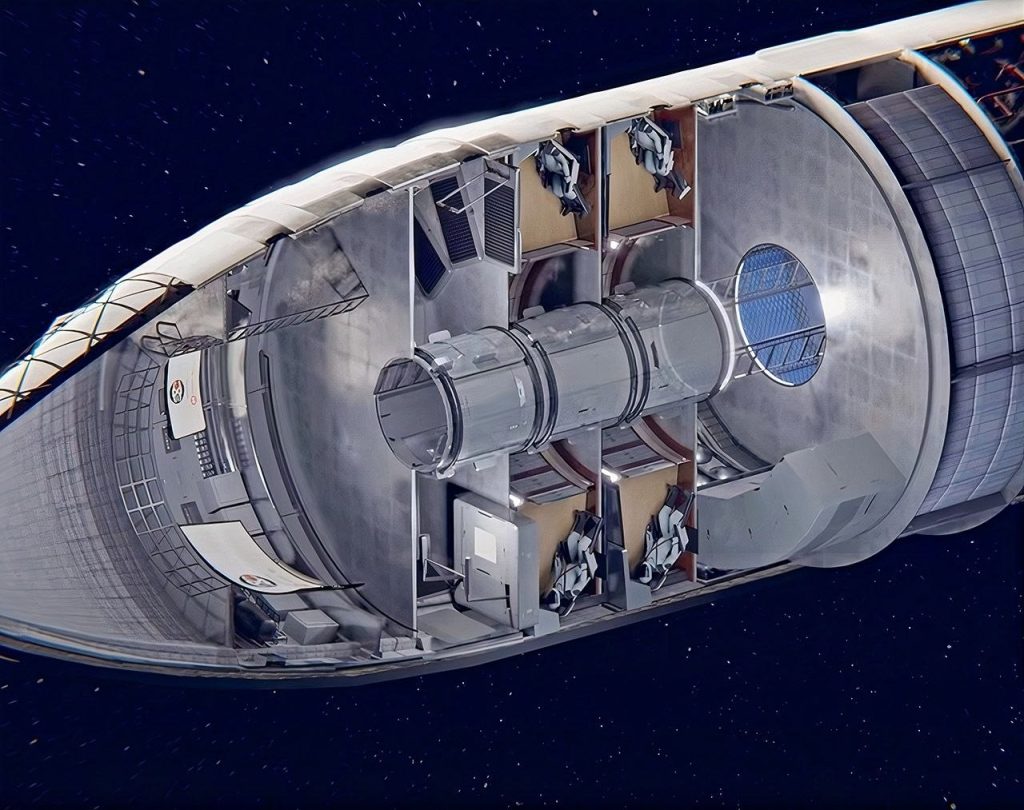
Where is Starship going to? To the Moon and Mars, which means it should be comfortable and safe for long-term human flights. The crew compartment will be equipped with a fully protected life support system, public areas, and private cabins. The ship will have storage, shelters from solar storms, waste recycling systems, and much more worthy of Continental Hotel comforts. Is this hard to believe? Take a tour of the spaceship cabin using this link. You will be delighted.
Also, for landing on the Moon, this spaceship should be equipped with supports, a solar battery, a set of orientation engines, and an elevator for lowering the crew and cargo.
What fuel does Starship use?
The super-powerful lunar rocket runs on fuel pairs: methane and oxygen. And this is no coincidence. Methane is the most convenient fuel for reusable rockets. Unlike kerosene, liquefied gas produces very little soot when burned. With methane, engine elements do not have to be cleaned of unburnt fuel residues. In addition, the methane engine can regulate thrust, shut down, and restart again. This means you can do without an accelerating block. And finally, there is methane on the Moon, and, in the future, we may be able to extract it. Refuelling can be carried out in orbit during docking with a tanker ship launched separately. This solution will help astronauts reach the Moon, and, in the future, Mars.
What’s next?
The latest version, the S24 transport system, showed a high level of rocket structural component manufacturing but was upset by the loss of communication with the first stage, engine failure, and fuel leakage.
On April 20, at the Boca Chica test site in Texas, a rocket destroyed the launch pad after a successful launch and although it rose to an altitude of 25 miles, it was forcibly detonated 4 minutes after launch due to the listed problems. Despite the Starship explosion, scientists have gained tremendous experience and are now continuing their work on improving rocket development.
Is Starship finally ready to fly?
There is not much time left before the flight to the Moon under the Artemis program, and many are wondering if Starship is ready to fly.
As you can see, after many years of work, testing, working on errors, and introducing the latest technologies, SpaceX has been able to create both parts of the spacecraft, successfully connect them and conduct a test SpaceX Starship launch.
Does SpaceX have permission to launch?
In early September 2023, the US Federal Aviation Administration completed a technical investigation into SpaceX’s April test launch of Starship SN24 and ordered the company to make 63 corrections, including equipment changes to prevent leaks and fires, as well as strengthening the launch pad. SpaceX readily responded to the comments and got to work.
On October 31, the U.S. Federal Aviation Administration (FAA) declared the completion of its safety evaluation for the SN24, evaluating potential hazards to public health and property associated with its launches. The FAA is optimistic and says it will likely be able to license the next launch in November. However, for the next Starship launch, SpaceX will still require environmental approval from the US Fish and Wildlife Service, whom the FAA is consulting with.
Will NASA use Starship?
Since the last test was not a complete success, NASA is in no hurry to announce the exact dates for the Starship launch to the Moon. The agency does not plan to abandon the use of SpaceX rockets but is not relying on them alone. The Artemis program involves dozens of other aerospace companies, both private and public, vying for a tasty piece of the Moon pie.
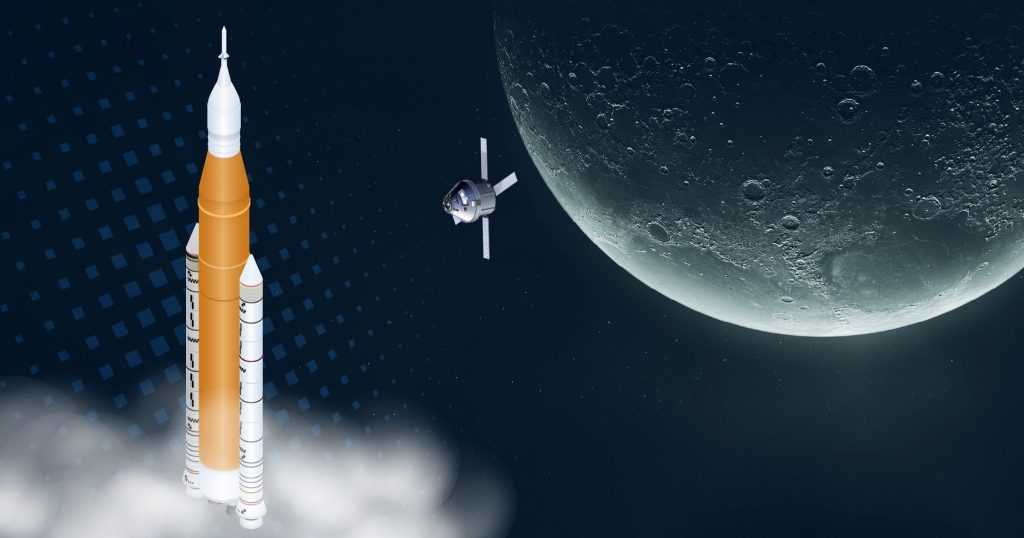
In particular, the main competitor of Starship is SLS, which in November 2022 already sent the Orion spacecraft on an unmanned flyby of the Moon. But the SLS has its drawbacks. It is obscenely expensive, and NASA is good at counting not only the astronomical objects’ coordinates but also money.
At the same time, Space X is wasting no time in proving that it is worthy of becoming the main company to service the Artemis mission. On 13 October, Falcon Heavy, which is the booster of Starship, successfully launched the probe on a six-year journey to one of the most enigmatic worlds in the asteroid belt between Mars and Jupiter. And it’s pretty cool, you know!
Despite a series of failures, SpaceX continues to work on Starship, and, knowing Elon Musk’s tenacity in achieving his goals, we can hope that we will still be able to witness the Starship launch to the Moon and Mars in the coming years.





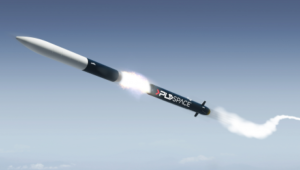
Thank you for your comment! It will be visible on the site after moderation.